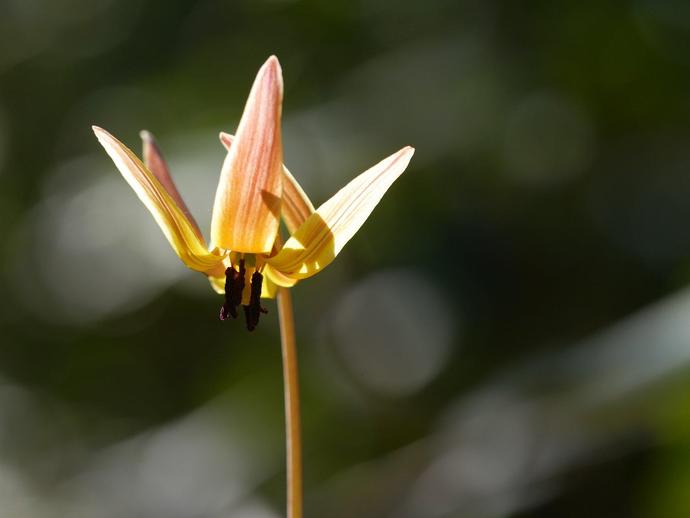March 31, 2021
It's time for the Wednesday edition of #BenInNature presented by our friends at Carter Bank & Trust!
Here's a cool find that a few of us museum folks spotted this week while wandering the Smith River Trails near Eggleston Falls in Ridgeway: Erythronium americanum, the yellow trout lily!
If you want to spot these beautiful flowers yourself, now is the time to go looking. Yellow trout lilies are what are known as "spring ephemerals," which refers to perennial plants that emerge very quickly in spring and then die back immediately after a short growth and reproduction phase. The rest of the year, they exist only as underground bulbs. The main reason they bloom so early in spring is that it allows them to soak up the sun before the trees leaf out.
Trout lilies tend to form dense colonies (some as much as 300 years old!), and once you find one, you'll probably find a whole bunch of them. They often reproduce asexually by creating new "daughter" bulbs, which is useful, because they aren't too great at spreading by seed. Only about 10 percent of pollinated trout lily flowers end up producing seeds.
In the event that they do produce seeds, they rely on ants to help spread them! Trout lilies are "myrmecochorous," meaning that ants help disperse the seeds to reduce the risk of animals eating them. Like many myrmecochorous plants, trout lily seeds have an elaiosome, which is a fatty structure that serves as an enticing treat to any ants passing through. They'll drag the seed to their nest, eat the elaiosome, and then toss the rest of the seed in their waste chamber, which just happens to be a perfect spot for a trout lily seed to germinate!
ABOUT #BenInNature
Social distancing can be difficult, but it presents a great opportunity to become reacquainted with nature. In this series of posts, Administrator of Science Ben Williams ventures outdoors to record a snapshot of the unique sights that can be found in the natural world. New updates are posted Monday - Friday, with previous posts highlighted on the weekends. This series of posts is made possible thanks to the support of VMNH Corporate Partner Carter Bank & Trust (www.cbtcares.com)
NATURE PHOTO IDENTIFICATIONS
If you discover something in nature that you would like help identifying, be sure to message us right here on Facebook with a picture (please include location and date of picture) and we'll have our experts help you identify it!

 Hours & Admissions
Hours & Admissions Directions
Directions

